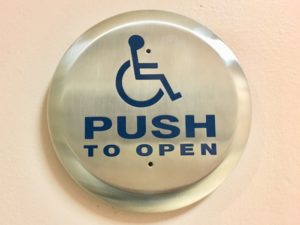The Outdoor Learning Commons is a relatively new addition to Camosun’s Lansdowne campus; the cluster of cement tables outside By the Books is only a few weeks old. While the idea itself appears efficient, there is one serious concern: the lack of accessible spots for those in wheelchairs and other people with mobility concerns. Of the six tables and six benches, only one has wheelchair access.
Most people would automatically believe this is perfectly fine. The thought of access is there, and it doesn’t negatively affect able-bodied students by lack of seating. The problem is, this one table seems to be one of the very few accessible tables on the entire campus. There is one place to study, one place to enjoy lunch, and one place to meet with friends on what should be an inclusive, open-minded college campus in 2018. Most of the time, the one table that is usable is in use by other students.

What really doesn’t make sense is that it would have been far too easy to make all of these tables user-friendly. One way this could have been easily accomplished upon installation would have been to have every table equipped with an accessible platform. This would have been simple because all of the tables are close to the edge of the installation. If the wooden barrier had been cut at the outermost edge of each of the tables, an access point could have been put in. While this may have affected standard seating, the general size of the space could have been increased in order to hold more tables.
It isn’t just in the learning commons that the issue of accessibility pops up. While the library does offer stations marked accessible, almost always there are chairs pulled up at these tables. Most building study spaces have stools that are bolted down and immovable; standing desks are too high; picnic benches are out of the question. While many would argue that most chairs can be moved, the point is that they shouldn’t have to be. Students with disabilities want to be as independent as possible, especially at college; asking someone to move a chair every five minutes isn’t a part of a person being independent on campus.
The question people should be asking—and what we will continue to explore in this column—is this: what is Camosun doing to make its campuses user friendly and accessible?
